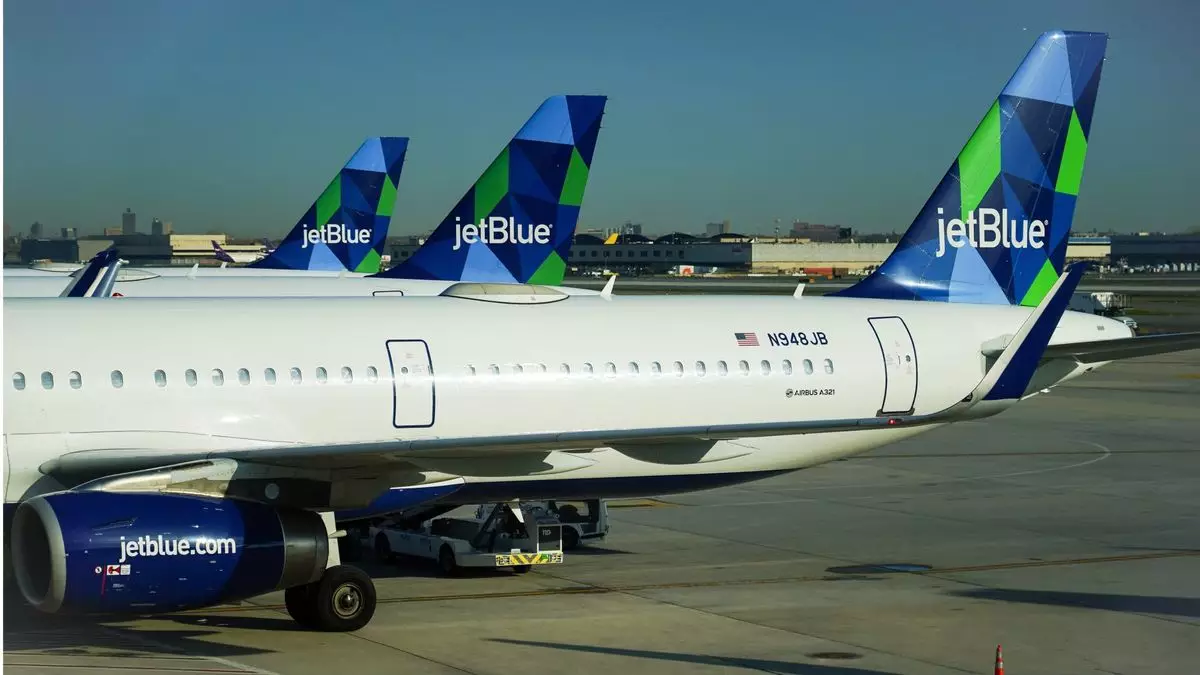In a significant regulatory action, the U.S. Department of Transportation (DOT) has imposed a $2 million fine on JetBlue Airways for its operational failures regarding flight delays. This unprecedented enforcement action underscores the growing scrutiny faced by airlines amidst increasing passenger expectations for timely service. The fine is primarily attributed to a pattern of chronic delays experienced by specific flights in the airline’s schedule over a sustained period. This article delves into the details surrounding the fine, JetBlue’s responses, and broader implications for the airline industry.
The DOT’s fine centers on four specific JetBlue flights that consistently arrived at their destinations more than thirty minutes late—over half the time spanning five to six consecutive months. This behavior, highlighted by the DOT’s standards, can indicate unrealistic scheduling practices where airlines fail to account for operational realities, thus leading to disruptive travel experiences for passengers. The consequence of such delays extends beyond mere inconvenience; they can reflect a detrimental approach to consumer service, prompting regulatory bodies to classify them as unfair and anticompetitive.
In a landscape where consumer trust and satisfaction are paramount, the implications of such designations could be severe for JetBlue’s brand image and market standing. The airline has faced harsh criticism historically for its timeliness, ranking poorly in on-time performance relative to its competitors—a challenge that the company has been grappling with over the years.
In light of the fine, JetBlue has attempted to construct a defense by attributing part of the delays to broader systemic issues beyond its control, particularly citing staffing shortages in air traffic control. This explanation positions JetBlue within a larger discourse on national air traffic management, an area where several airlines face similar challenges. In its statement, the airline urged the incoming administration to prioritize the modernization of air traffic control systems and address the chronic staffing shortages affecting operations in major markets.
However, this defense poses a double-edged sword; while it highlights external challenges, it also draws attention to the airline’s dependency on factors outside its immediate operational scope. The acknowledgment of these systemic issues reframes the narrative around JetBlue from one solely focused on internal leadership and management failures to one that encompasses the broader complexity of the aviation industry’s infrastructure and support systems.
JetBlue’s $2 million settlement will see $1 million directed toward the U.S. Treasury while the remaining amount will be credited toward compensating customers affected by delays or cancellations deemed the airline’s fault. Such financial settlements can play a significant role in shaping customer experiences; the implementation of compensation guarantees may help JetBlue rebuild its reputation for reliability.
The consent agreement explicitly stipulates that affected passengers would be entitled to at least $75 in compensation, potentially in the form of flight vouchers. While these measures are crucial in addressing consumer grievances, they highlight the broader trend of airlines responding to regulatory scrutiny by enhancing customer service initiatives.
When examining JetBlue’s operational performance, it is essential to consider recent improvements. The airline’s on-time performance ratings for 2024 show a notable increase from past years, demonstrating a commitment to operational excellence. Despite these advancements, JetBlue still lagged behind industry leaders, indicating that significant work lies ahead.
Furthermore, the airline’s heavy concentration of flights in the Northeast intensifies operational challenges, given that this region deals with some of the most congested airspace and staffing shortages within the air traffic control workforce. As the Federal Aviation Administration (FAA) attempts to address these shortfalls through ambitious hiring goals, the urgency for airlines like JetBlue to optimize their schedules while adhering to regulatory compliance increases.
JetBlue’s fine serves as a wake-up call not only for the airline but also for the industry at large. As airlines face increasing regulatory scrutiny and the expectations of refined consumer service, they must adapt their operational strategies to meet both market demands and compliance requirements. The scrutiny from the DOT reveals a growing recognition of the importance of dependable air travel, and it is imperative that airlines implement sustainable changes to avoid similar penalties in the future. JetBlue’s case is illustrative of the challenges ahead as the aviation sector nears recovery from past disruptions while operating within an increasingly complex regulatory landscape.


Leave a Reply